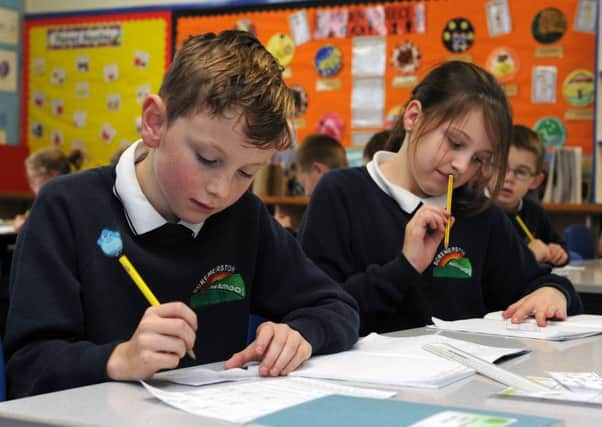New figures show Scots children's numeracy levels in decline
This article contains affiliate links. We may earn a small commission on items purchased through this article, but that does not affect our editorial judgement.


While a third of second year high school pupils failed to work at the level set for their age group, the figures also showed a vast gap between the performance of those from the richest and most deprived background, with the difference widening as children get older.
The figures showed that a third of primary school students failed to reach the highest levels in mathematics.
Advertisement
Hide AdAdvertisement
Hide AdBoys outperformed girls at S2 level and just a quarter of pupils from a deprived background reached the highest levels of attainment.
Politicians have branded the figures ”a disgrace” and demanded more investment in Scotland’s schools.
New education secretary John Swinney acknowledged he has much to do to improve schooling following the publication of the figures.
Scottish Labour Education spokesman Iain Gray said: “These figures are a disgrace, and show what happens when a government cuts education budgets by 10 per cent. Our children pay the price in poorer literacy and numeracy skills.
“We need to cut the gap between the richest and the rest to give our young people the skills they need to compete for the jobs of the future, but we can only do that by investing in our schools.
• READ MORE: Tories back SNP plans to give schools more power
Green MSP Ross Greer said: “This latest survey shows the new Education Secretary must get to grips with the inequality that is becoming embedded in our society. To see gaps of between 21 and 28 points in numeracy results between the most and least deprived young people is deeply worrying, and demands urgent action both inside and outside our school system.”
The proportion of P4 pupils that performed well or very well decreased between 2011 and 2013, and again, slightly, between 2013 and 2015, the survey shows.
Advertisement
Hide AdAdvertisement
Hide AdAt P7, performance stabilised between 2013 and 2015 after an initial fall between 2011 and 2013. Meanwhile, S2 performance remained broadly the same across all three survey years.
Larry Flanaghan, general secretary of teaching union EIS, said: “This year’s survey shows that, overall, Scotland’s pupils continue to perform well in numeracy, with most pupils working at or above the appropriate level for their stage.”
He added: “It is significant to note that where there has been a dip, it has occurred primarily in pupils from the most deprived backgrounds - underlining the fact that austerity driven cuts, which have deepened the levels of child poverty in Scotland, have created even greater barriers to educational achievement for too many of our young people.”
Unveiling the figures at Dundee’s Dens Road Primary School this morning, Education Secretary John Swinney said: “Today’s statistics reinforce the need to improve attainment and to close the gap between the performance of young people from different backgrounds in Scotland’s schools.
“We have much to do to ensure our young people are supported to improve their understanding and use of numeracy and our teachers are equipped with the knowledge, skills and confidence to drive up standards in this area.”
DOWNLOAD THE SCOTSMAN APP ON ITUNES OR GOOGLE PLAY